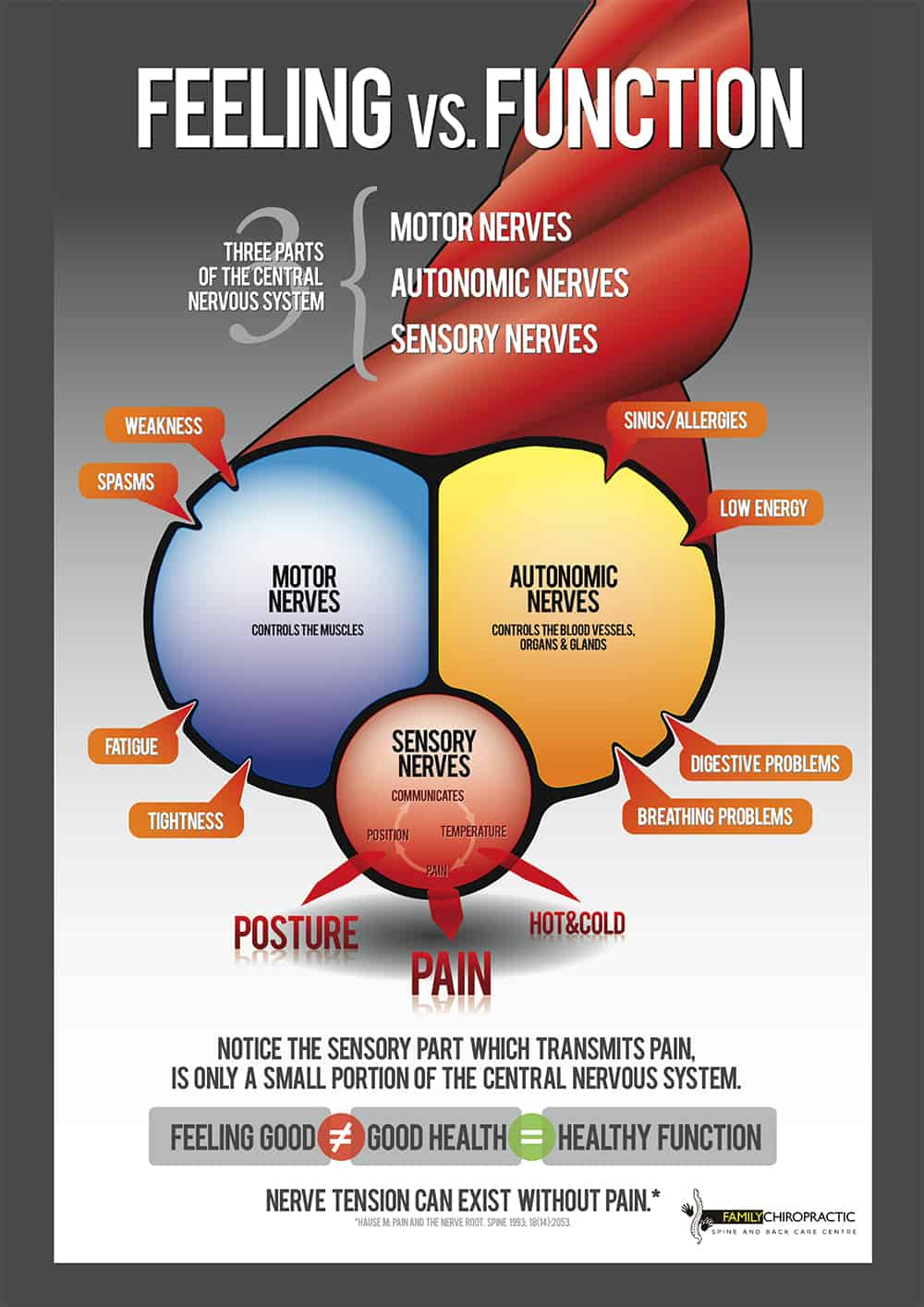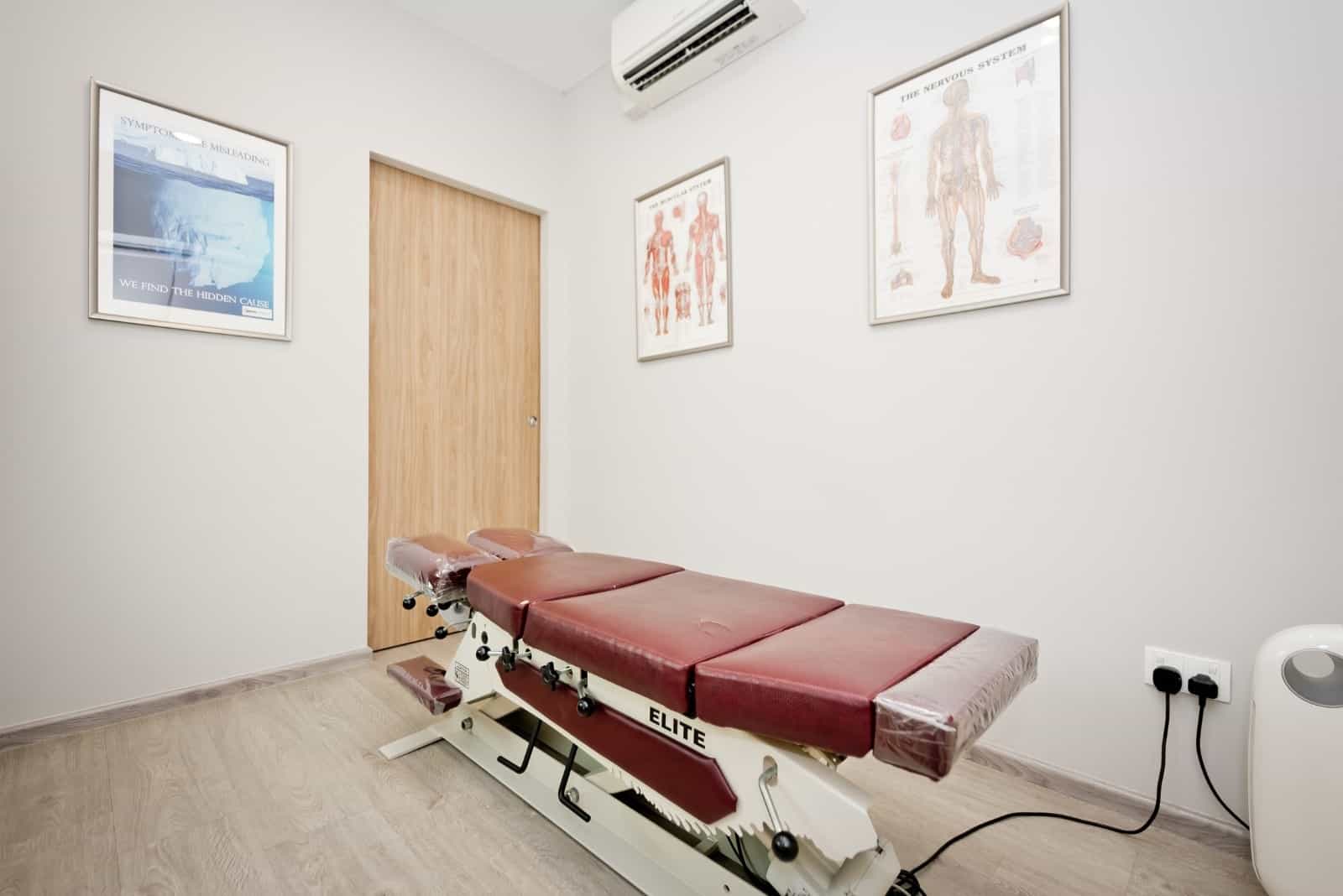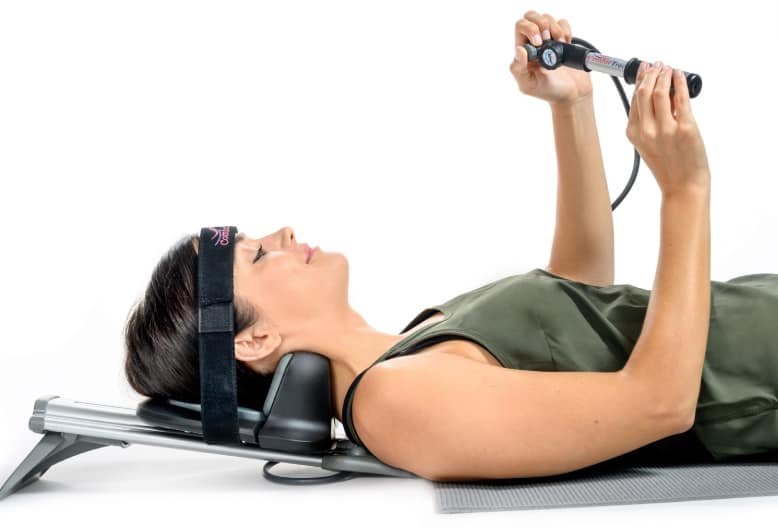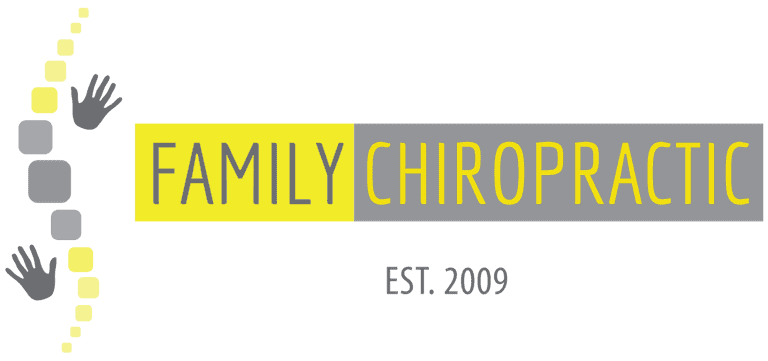What is Chiropractic?
Chiropractic is a healthcare discipline that focuses on the relationship between the spine and the nervous system, and how this affects the maintenance and restoration of your health. It aids your nervous system by removing any nerve compression and irritation that can be caused by stress, thus reviving the body’s innate ability to heal itself.
Is Chiropractic proven
to be effective?
Medical doctors can be traditionally wary of spinal manipulation (applying pressure on the bones and joints) for two reasons. Firstly, they do not consider chiropractors as doctors; and secondly, a small handful of chiropractors have falsely claimed that they can use spinal manipulation to address conditions that have little to do with the spine.
However, in 2017, the American College of Physicians released revised clinical practice guidelines for non-invasive treatment of acute back pain—which recommend patients to try heat, massage, acupuncture or spinal manipulation as first-line therapies.
In this guide, we have compiled a credible list of scholarly reviews and studies done in recent years regarding chiropractic treatment.
Chiropractic is effective to reduce pain and improve functions for people with chronic low-back pain.
A 2018 review published in The Spine Journal references numerous studies spanning 17 years which involve spinal manipulation and mobilisation. The review found evidence from a study of 1,176 patients that chiropractic methods are likely to reduce pain and improve function for patients with chronic lower back pain. These results are supported by another study published by JAMA Network which suggests that spinal manipulative therapy helps in reducing acute lower back pain.
Chiropractic treatments and exercises can be more effective to reduce neck pain as compared to over-the-counter medication.
In a 2012 study funded by NIH’s National Center for Complementary and Alternative Medicine, test results indicated that spinal manipulative therapy from chiropractors could be more effective than over-the-counter pain medication for helping with mechanical neck pain. The study involved 272 participants who were divided into three groups that received either spinal manipulative therapy (SMT) from chiropractors, over-the-counter pain medication or exercise recommendations. After 12 weeks, about 57 percent of those who received chiropractic care and 48 percent who exercised reported at least a 75 percent reduction in pain, compared to 33 percent of the people in the medication group. After one year, approximately 53 percent of the drug-free groups continued to report at least a 75 percent reduction in pain; compared to just 38 percent pain reduction among those who took medication.
Chiropractic care can augment standard mainstream medical care to provide better pain relief.
A 2013 study published by Spine Journal shows that, combined with chiropractic manipulative therapy, mainstream medical care could offer a significant advantage for decreasing pain and improving function (as compared to medical care alone) for patients aged 18 to 35 years with acute low back pain.
Patients in the U.S. found chiropractic care to be effective in treating back and neck pain as well as improving their overall well-being.
Patient satisfaction is an important and commonly used indicator for measuring the quality of healthcare, since it affects clinical outcomes, patient retention and medical malpractice claims. Researchers analysing the prevalence, patterns and predictors of chiropractic utilisation in the U.S. general population found that back and neck pain were the most prevalent health problems for chiropractic consultations, and the majority of users reported chiropractic helping a great deal with their pain issues and improving their overall health or wellbeing.
How does
Chiropractic work?
Theoretically speaking, the proper alignment of the body’s musculoskeletal structure, particularly the spine, enables the body to heal itself without surgery or medication. Hence, chiropractors often use a hands-on spinal manipulation approach and other alternative treatments.
Manipulation is used to restore mobility to joints restricted by tissue injury. These injuries can be caused by traumatic events such as falling, or repetitive physical stress such as sitting without proper back support.
Chiropractic treatment is primarily used as a pain relief alternative for muscles, joints, bones and connective tissue, such as cartilage, ligaments, and tendons. It is sometimes used in conjunction with conventional medical treatment.


What is Subluxation?
A familiar term in modern chiropractic care, subluxation describes a joint that doesn’t work the way it’s supposed to. This could refer to a misaligned joint, or a joint not being able to move how it should. Subluxation can lead to numbness, tingling, pain and a burning sensation in affected areas of the body.
A common area that tends to subluxate is the vertebrae of the spine (spinal subluxation). However, it is important to note that chiropractic treatment does not only relieve spinal subluxation—people suffering from other types of subluxations in other joints can also find relief in chiropractic treatment. Feet, shoulders, ribs, wrists and more can subluxate and be adjusted by a chiropractor.
Different Types of Chiropractic Treatments
Chiropractic treatment sessions generally last around 10 to 15 minutes per session. In more serious cases, these sessions may be
extended depending on your body’s condition and needs.

Manual Treatments
Typically involving adjustments, soft tissue and myofascial therapy.

Instrument-Led Treatments
Some of these techniques include the Activator, Spinal traction devices and Sacral Occipital Technique (SOT) blocks.

Chiropractic Therapies
ultrasound and electrotherapy, sports taping support.

Nutrition & Exercise
anti-inflammatory dietary counselling and functional movement exercises.
Manual Treatments


Instrument-Assisted Treatments
Many chiropractors also possess tools at their disposal. The following methods are manual treatments with the assistance of instruments:
Chiropractic Therapy Techniques
Besides manual and instrument-assisted methods, chiropractors can utilise therapies to alleviate pain, reduce tension, increase mobility, and augment the recovery process.


Nutrition and Exercise
Chiropractic care is most effective when paired with proper exercise and nutrition. On top of chiropractic pain relief treatments, chiropractors will usually provide suggestions on what you can do to enhance your recovery on your own at home or during your free time. More often than not, these recommendations will fall under either nutrition or exercise.
What is the “popping” sound during adjustment?
When the two surfaces of a joint are moved apart rapidly during a chiropractic adjustment, there is a change of pressure within the joint space. This sometimes causes a bubble of gas in the joint space to “pop”. Although audible, the “popping” is painless and does not have any negative implications.
Is Chiropractic adjustment painful?
When carried out correctly by a qualified chiropractor, adjustments are not painful. However, if you are suffering from acute muscle spasm and even the slightest contact is painful, there may be some discomfort while muscular knots are released, as well as post-treatment soreness for the next one to two days. If you have been experiencing chronic pain or an issue for some time, you may also feel sore after the treatment as your body adjusts; however, there should not be any pain during the adjustment itself.
Can I ‘adjust’ myself to relieve pain?
You should not attempt to self adjust to relieve pain. Self adjustment may lead to temporary pain relief, but it also creates a muscle and joint ‘memory’ to your specific spine region, eventually building up in pressure and slowly causing the joint to wear out. There may be an increased risk of premature and accelerated spinal degeneration, muscle strain as well as possible joint sprains.
When do you need
Chiropractic Care?
Chiropractic treatment is primarily used as a pain relief alternative for muscles, joints, bones, and connective tissue, such as cartilage, ligaments, and tendons. It is sometimes used in conjunction with conventional medical treatment.
You can visit a chiropractor even when you are not in pain or discomfort, as chiropractic care can help to maintain your health before you develop symptoms.
The common reasons to get chiropractic treatments are:
- To remove pain
- To seek rehabilitation
- To improve athletic performance
- To prevent injuries
- To live healthier
Chiropractic treatment is primarily used as a pain relief alternative for muscles, joints, bones, and connective tissue, such as cartilage, ligaments, and tendons. It is sometimes used in conjunction with conventional medical treatment.

What chiropractors don't treat
If medication or surgery is a better treatment for your condition, your chiropractor should let you know. Chiropractors should not be treating:
Benefits and Effectiveness of
Chiropractic Treatments
Chiropractors use an all-rounded approach to help you lead a healthier life. Many factors (your habits, diet, exercises, postures or even your job) play a part in tailoring a customised plan depending on your needs and goals
Choosing between Chiropractic,
Physiotherapy and TCM
So, what’s the best way to determine which type of therapy is right for you? This depends on the type of condition you have and your specific needs. It is important to consult an experienced and trusthworthy healthcare practitioner when trying to decide on the type of therapy you need.
Chiropractic
and TCM
Traditional Chinese Medicine (TCM) is usually concerned with the flow of Qi (chi) through the body. It is believed that any blockage or accumulation of chi (also known as “wind”) in the body is the culprit to health concerns experienced, be it aches and pains, or chronic illnesses, digestive problems and diabetes.
Some of the common methods used to alleviate symptoms include acupuncture, herbal remedies, cupping (removing “bad” blood), massage (tui na), and, on occasion, bone setting.
It is crucial to find a professional and experienced TCM doctor. With proper herbal prescription and acupuncture, your recovery can be accelerated when TCM care and chiropractic care are combined. Certain conditions such as frozen shoulders, tennis elbows (tendinosis), and sprained ankles have shown faster recovery rates when combining both treatments.


Chiropractic and
Physiotherapy
Physiotherapy generally focuses on the musculoskeletal system, in particular, muscles being injured, strained, weakened or not performing. Physiotherapy is commonly sought post injury for rehabilitation. Both chiropractic and physiotherapy are considered complementary treatments since they are non-invasive and do not require pharmaceutical or surgical intervention.
People may assume that if they see a chiropractor, there is no value in using physiotherapy, and vice versa. However, both treatments have great benefits when combined with the right practitioners and patients.Some chiropractors may suggest a combination of both physiotherapy and chiropractic care.
For instance, if you are experiencing an ankle ligament sprain, this may induce a limp. Whilst the issues surrounding the ankle can be treated by a physiotherapist, the limp may have resulted in a strain in the lower back, which can be treated by a chiropractor.
Choosing the
right chiropractor
Receiving quality chiropractic care can improve your overall wellbeing. Hence, it is important to choose the right chiropractor who can provide credible advice.
Here are some things to look out for when choosing your chiropractor:
- Does your chiropractor give sufficient time to you the first visit and on every subsequent visit?
- Does he or she appear eager to help you get better as quickly as possible and to empower you to take care of yourself in the future?
- Do you feel comfortable with your new chiropractor?
- Are you getting better as a result of the treatments and not just the mere passage of time? (When effective treatment is given, most patients will see a significant improvement within the first several weeks of care, and sometimes even sooner.)
- Is treatment physically comfortable? (Occasionally there may be some minor treatment soreness or even increase in symptoms after a treatment. This should not last more than a day or so, and improvement should be obvious with further care. If this happens, be sure to let your chiropractor know.)
The following may be warning signs of a bad chiropractor:
- Unnecessary repeat x-ray studies
- Months of endless care without re-examination
- No improvement or even worsening does not result in re-examination or referral elsewhere
- Pressure for Pre-sold treatment “packages” regardless of conditions
- Pressure to sign up for or attend maintenance or preventive care programs.
Is your chiropractor qualified?
When visiting a chiropractor in Singapore, you should always verify their education background to check if it is from an accredited school. Currently, there are about 150 Chiropractors and about 90 chiropractic establishments in Singapore.
Based on Council of Chiropractic Education (CCE-I) that regulates chiropractic education, this is a list of accredited chiropractic programmes:
- Macquarie University, Sydney, Australia
- Murdoch University, Perth, Australia
- New Zealand College of Chiropractic, Auckland, New Zealand
- RMIT University, Melbourne, Australia
- Hanseo University, Korea
- Tokyo College of Chiropractic, Japan
- International Medical University, Malaysia
- Anglo-European College of Chiropractic – Bournemouth, UK
- Barcelona College of Chiropractic – Barcelona, Spain
- Durban University of Technology – Durban, SA
- Institut Franco-Europeen de Chiropratique – France
- McTimoney College of Chiropractic – UK
- RCU Escorial Maria-Cristina – Madrid, Spain
- Syddansk Universitet Odense – Denmark
- University of Johannesburg – Dept. of Chiropractic – Johannesburg, SA
- University of South Wales – Welsh Institute of Chiropractic – Wales
- University of Zurich – Zurich, CH
- Canadian Memorial Chiropractic College
- Université du Québec à Trois-Rivières
To graduate and become a professional chiropractor, one must complete 4-5 years of extensive full-time study in a university that covers two degrees majoring in Health Sciences and Clinical Chiropractic. Practitioners are taught to assess, diagnose, and apply practical skills to manage patients. Upon completion, the chiropractor will be required to continue their training and learning throughout their career as part of their continued registration as a Doctor of Chiropractic (D.C.).
Make An Appointment with
our Chiropractors
Don't let pain stop you. Let us help you stop pain.












